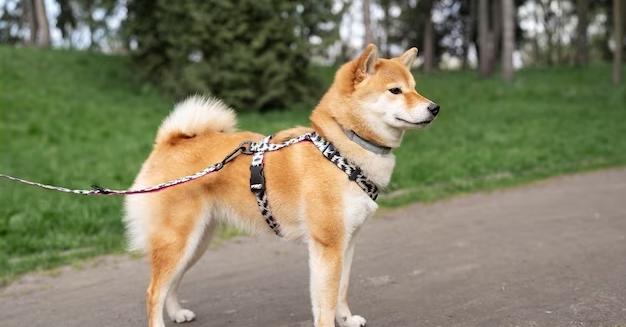When it comes to walking your dog, a good harness can make all the difference. Unlike traditional collars, which can put pressure on a dog’s neck and throat, a harness distributes the force more evenly across the chest and shoulders, making it a safer and more comfortable option.
But with so many options available, how do you choose the perfect dog harness for your furry friend? In this ultimate guide, we will walk you through the key factors to consider when selecting a dog harness.
Why Choose a Dog Harness?
Before we dive into the details of choosing the right personalized dog harness, let’s briefly discuss why you should consider using one in the first place:
- Safety: Harnesses reduce the risk of injury by preventing neck strain, especially for dogs that pull or have respiratory issues.
- Control: They provide better control over your dog’s movements, making walks more manageable and enjoyable.
- Comfort: A properly fitted harness is comfortable for your dog, with no pressure on the neck or throat.
- Training: Harnesses are often recommended for training purposes, as they discourage pulling and jumping.
Now that we’ve established the benefits of using a harness, let’s explore the steps to choose the perfect one.
Steps To Choose The Right Harness
Measure Your Dog
The first step in choosing the perfect harness is to accurately measure your dog. Each dog is unique, and different breeds have different body shapes. To ensure a proper fit, you’ll need to measure your dog’s:
- Chest Girth: Measure the widest part of your dog’s chest, just behind the front legs. Make sure to add a few inches to allow for breathing room.
- Neck Girth: Measure around the base of your dog’s neck, just above the shoulders.
- Length: Measure from the base of the neck to the base of the tail. This measurement is less critical but can help ensure a comfortable fit.
Having these measurements on hand will make it much easier to find a harness that fits your dog perfectly.
Choose the Right Type of Harness
There are several types of harnesses available, each designed for specific purposes. The most common types include:
- Standard Harness: These are designed for everyday walking and provide good control. They are suitable for most dogs and come in various styles, such as step-in, over-the-head, and no-pull.
- No-Pull Harness: These are designed to discourage dogs from pulling on the leash. They typically have a front attachment point to redirect your dog’s attention toward you when they pull.
- Vest Harness: Vest-style harnesses cover more of your dog’s body and may offer additional support for small or toy breeds.
- Back-Clip Harness: These harnesses have a leash attachment point on the back and are suitable for well-trained dogs that don’t pull excessively.
- Front-Clip Harness: Front-clip harnesses have a leash attachment on the chest, helping to control pulling behavior and encourage dogs to walk beside you.
- Step-In Harness: These are easy to put on, making them a good choice for dogs that are a bit fidgety during harnessing.
Select the type of harness that aligns with your dog’s behavior, size, and walking style.
Consider Material and Comfort
A comfortable harness is crucial for your dog’s well-being. Look for harnesses made from durable yet comfortable materials, such as nylon, neoprene, or padded mesh. Pay attention to any potential friction points or rough edges that could cause discomfort.
Additionally, make sure the harness is adjustable so you can achieve a snug but not too tight fit. A snug fit prevents your dog from slipping out of the harness while ensuring they are comfortable and can move freely.
Safety Features
Safety should be a top priority when choosing a harness. Look for harnesses with reflective strips or stitching, especially if you plan to walk your dog in low-light conditions. This added visibility can help keep both you and your dog safe during evening walks.
Furthermore, consider the durability of the harness. Reinforced stitching and sturdy hardware are essential to ensure your dog cannot break free during walks.
Easy to Put On
Ease of use is another important factor to consider. Some harnesses are designed with quick-release buckles or step-in designs, making them easy to put on and take off. This is especially beneficial if you have a dog that dislikes having a harness put on.
Fit and Adjustability
As mentioned earlier, a proper fit is crucial for your dog’s comfort and safety. Look for harnesses with multiple adjustment points to achieve a customized fit. Pay attention to the chest and belly straps, ensuring they are snug but not too tight. You should be able to fit two fingers between the harness and your dog’s skin. Remember, always buy safety harness and other dog training equipments that would suit your dog’s body and not hurt him.
Test the Fit
Once you’ve selected a harness, it’s essential to test the fit before heading out for a walk. Ensure that the harness is snug but not restrictive and that it doesn’t rub or chafe your dog’s skin. Your dog should be able to move comfortably and breathe easily while wearing the harness.
Seek Professional Advice
If you’re unsure about which harness to choose or how to properly fit it, don’t hesitate to seek advice from a professional dog trainer or your veterinarian. They can provide guidance based on your dog’s specific needs and behavior.
Conclusion
Choosing the perfect dog harness for your furry friend is a crucial decision that can significantly impact your dog’s safety, comfort, and enjoyment during walks. By measuring your dog, selecting the right type of harness, considering material and comfort, prioritizing safety features, ensuring ease of use, focusing on fit and adjustability, and testing the fit, you can make an informed choice that benefits both you and your canine companion. Remember that a well-fitted harness not only enhances your dog’s walking experience but also strengthens the bond between you and your furry friend.
